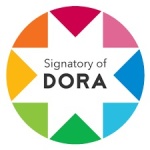Analyzing the impact of corruption on economic growth according to the difference in exports' structure
Abstract
This study aims to analyze the impact of corruption on economic growth and the form of that effect according to the difference in the export structure of 79 countries, during the period 2012/2018, which were divided into four groups, according to the UNCTAD classification. The analysis is based on the panel data model. Which was estimated using the STATA 16 software. The study found a variety of effects due to export structure differences. It was found that corruption has a significant negative impact on oil and minerals exporters’ countries, while it had no significant effect on industrial and agricultural products exporters’ countries. Therefore, the most important recommendation that can be made here is that there is no unified anti-corruption policy among countries to follow. Rather, the country's export structure is of major importance in generating solution components of that anti-corruption policy.
Downloads
References
Ades, A., & Tella, R. (1999). Rents, Competition, and Corruption. The american economic review, 89(4), 982-993.
Ahmad, E., Aman ullah, A., & Arfeen, A. (2012). Does corruption affect economic growth? Latin American Journal of Economics, 49(2), 277-305.
Aidt, T. S. (2011). Corruption and sustainable development. In S. Rose-Ackerman, & T. Søreide, International Handbook on the Economics of Corruption (Vol. 2, pp. 3-51). Cheltenham UK: Edward Elgar Publishing.
Aidt, T., Dutta, J., & Sena, V. (2008). Governance regimes, corruption and growth: Theory and evidence. Journal of Comparative Economics, 36, 195–220.
Alfada, A. (2019). The destructive effect of corruption on economic growth in Indonesia: A threshold model. Heliyon, 5(10), e02649.
Asongu, S. (2012). On the effect of foreign aid on corruption. AGDI Working Paper, No. WP/12/031. Yaoundé, Cameroon: African Governance and Development Institute.
Auriol, E., Straub, S., & Flochel, T. (2016). Public Procurement and Rent-Seeking: The Case of Paraguay. World Development, 77, 395-407.
Bhattacharyya, S., & Hodler, R. (2010). Natural resources, democracy and corruption. European Economic Review, 54(4), 608-621.
Bjorvatn, K., Farzanegan, R., & Schneider, F. (2012). Resource Curse and Power Balance: Evidence from Oil-Rich Countries. World development. World development, 40(7), 1308-1316.
Campos, N., Dimova, R., & Saleh, A. (2010). Whither Corruption? A Quantitative Survey of the Literature on Corruption and Growth. IZA Discussion Papers, No. 5334. Bonn: Institute for the Study of Labor (IZA).
Charron , N. (2011). Exploring the Impact of Foreign Aid on Corruption: Has the “Anti‐Corruption Movement” Been Effective? The Developing Economies, 2011, 49(1), 66-88.
de Medeiros Costa, H., & dos Santos, E. (2013). Institutional analysis and the “resource curse” in developing countries. Energy Policy, 63, 788-795.
Easterly, W. (2003). Can Foreign Aid Buy Growth? Journal of Economic Perspectives, 17(3), 23-48.
Erum, N., & Hussain, S. (2019). Corruption, natural resources and economic growth: Evidence from OIC countries. Resources Policy, 63, 1-10.
Gillies , A. (2020). Corruption trends during Africa's oil boom, 2005 to 2014. The Extractive Industries and Society.
Hesse, H. (2008). Export Diversification and Economic Growth. Washington DC: World Bank.
Huang, C.-J., & Ho, Y.-H. (2018). The Impact of Governance on Income Inequality in Ten Asian Countries. Journal of Reviews on Global Economics(7), 217-22.
IMF. (2020). How the IMF is Promoting Transparent and Accountable Use of COVID-19 Financial Assistance. Retrieved 08 07, 2020, from https://www.imf.org/en/About/Factsheets/Sheets/2020/04/30/how-imf-covid19-financial-help-is-used
Isham, J., Woolcock, M., Pritchett, L., & Busby, G. (2005). The varieties of resource experience: natural resource export structures and the political economy of economic growth. The World Bank Economic Review, 19(2), 141-174.
Kato, A., & Sato, T. (2015). Greasing the wheels? The effect of corruption in regulated manufacturing sectors of India. Canadian Journal of Development Studies, 36(4), 459-483.
Kolstad, I., & Wiig, A. (2011). Does democracy reduce corruption? CMI Working paper 2011:4. Bergen, Norway: Chr. Michelsen Institute.
Leite, C. A., & Weidmann, J. (1999). Does Mother Nature Corrupt? Natural Resources, Corruption, and Economic Growth. Working Paper No. 99/85. Washington DC: IMF Publications.
Lučić, D., Radišić, M., & Dobromirov, D. (2016). Causality between corruption and the level of GDP. Economic Research-Ekonomska Istraživanja, 29(1), 360-379.
Mauro, P. (1995). Corruption and Growth. The Quarterly Journal of Economics, 110(03), 681-712.
Mehrara, M. (2009). Reconsidering the resource curse in oil-exporting countries. Energy Policy, 37(3), 1165-1169.
Menard, A.-R., & Weill, L. (2016). Understanding the link between aid and corruption: A causality analysis. Economic Systems, 40, 260-272.
Méon, P.-G., & Sekkat, K. (2005). Does Corruption Grease or Sand the Wheels of Growth? Public Choice, 122(1/2), 69-97.
Murphy, K. M., Shleifer, A., & Vishny, R. W. (1991). The Allocation of Talent: Implications for Growth. The Quarterly Journal of Economics, 106(2), 503-530.
Neudorfer, N. (2018). Commodities and corruption–How the middle class and democratic institutions lead to less corruption in resource-rich countries. Resources Policy, 58, 175-191.
Öge, K. (2016). Which transparency matters? Compliance with anti-corruption efforts in extractive industries. Resources Policy, 49, 41-50.
Ross, M. (2019). What do we know about export diversification in oil-producing countries? The Extractive Industries and Society, 6(3), 792-806.
Sachs, J., & Warner, A. (2001). The curse of natural resources. European Economic Review, 45(4-6), 827-838.
Sahu, S. K., & Gahlot, R. (2014). Perception about Corruption in Public Servicies: A Case of Brics Countries. Journal of Social Science for Policy Implications, 2(2), 109-124.
Sepehrdoust, H., & Shabkhaneh, S. (2018). How knowledge base factors change natural resource curse to economic growth? Technology in Society, 54, 149-154.
Tornell, A., & Lane, P. (1999). The Voracity Effect. American Economic Review, 89(1), 22-46.
Treisman, D. (2000). The causes of corruption: a cross-national study. Journal of public economics, 76(3), 399-457.
Ugur, M., & Dasgupta, N. (2011). Evidence on the economic growth impacts of corruption in low-income countries and beyond: a systematic review. University of London, Institute of Education. London: EPPI-Centre, Social Science Research Unit.
Wedeman, A. (2004). Great Disorder under Heaven: Endemic Corruption and Rapid Growth in Contemporary. China Review, 04(02), 1-32.
Copyright (c) 2021 Labed Lazhar, Boucenna Mohamed Ridha, Kemmouche Imen

This work is licensed under a Creative Commons Attribution-NonCommercial 4.0 International License.















